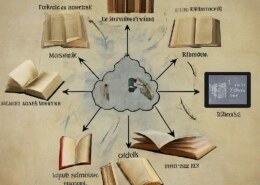How can technology be leveraged to document and promote traditional folk dances?
In the modern world technology plays a crucial role in monitoring and migrating urban Air pollution through various inventions. Some of them are: MONITORING AIR POLLUTION: 1.AIR QUALITY SENSORS: These are cheap, portable sensors and these are present across urban areas to measure air quality data anRead more
In the modern world technology plays a crucial role in monitoring and migrating urban Air pollution through various inventions. Some of them are:
MONITORING AIR POLLUTION:
1.AIR QUALITY SENSORS: These are cheap, portable sensors and these are present across urban areas to measure air quality data and various pollutants.
2.GADGETS: Nowadays Smartphones, watches has built in air quality sensors to check air quality of urban areas. These also help in differentiating harmful and Good air quality of the area.
3.TRACKING THROUGH SATELLITES: Satellites helps to track pollutants over vast area and offering data on a global level.
4.APPS AND WEBSITES: Various apps and website are made for checking AQI. These also provide a health advisory to the public .
MITIGATING AIR POLLUTION:
1.TRAFFIC MANAGEMENT: There must be an intelligent traffic management system to reduce traffic flow and vehicle emission.
2.ADOPTING ELECTRIC VEHICLES: Promote and adopt the use of electric vehicle this reduces the pollution emitted from vehicles.
3.SOLAR, WIND, AND HYDROPOWER:
Use of solar wind and hydro power decreases the air pollution from power generation. This also helps the increasing good air quality in urban area.
4.AWARENESS AND EDUCATION: In urban areas awareness and education is the most important thing to reduce air pollution. Campaign, app, social media and online platforms can be used to raise awareness about air quality and how to reduce it and how to move towards sustainable practices.



Integrated Pest Management (IPM) is a sustainable approach to controlling pests that combines biological, cultural, mechanical, and chemical methods to minimize environmental impact and enhance agricultural productivity. Biological Controls: IPM utilizes natural predators, parasites, and pathogens tRead more
Integrated Pest Management (IPM) is a sustainable approach to controlling pests that combines biological, cultural, mechanical, and chemical methods to minimize environmental impact and enhance agricultural productivity.
Biological Controls: IPM utilizes natural predators, parasites, and pathogens to manage pest populations. Introducing beneficial insects, like ladybugs to control aphids, reduces the need for chemical pesticides, promoting a balanced ecosystem.
Cultural Practices: Crop rotation, intercropping, and selecting pest-resistant crop varieties can disrupt pest life cycles and reduce infestations. These practices maintain soil health and biodiversity, crucial for sustainable farming.
Mechanical and Physical Controls: Techniques such as traps, barriers, and manual removal of pests help control populations without harming the environment. These methods are often labor-intensive but reduce reliance on chemicals.
Chemical Controls: When necessary, IPM advocates for the judicious use of pesticides, selecting those with minimal environmental impact and applying them in targeted ways. This approach reduces pesticide resistance and protects non-target organisms, including beneficial insects.
See less